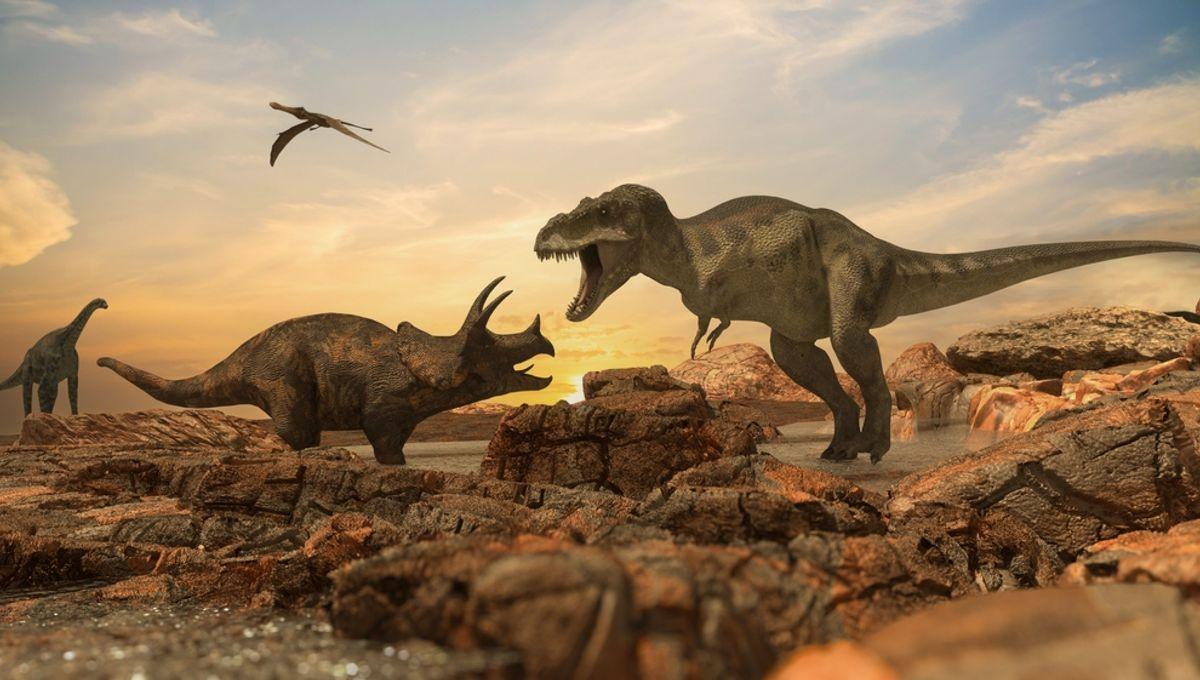-
Web sayfası bildirimcisi
- EXPLORE
-
Sayfalar
-
Blogs
-
Forums
Some Giant Predatory Dinosaurs Had Barks (Or At Least Slashes) Worse Than Their Bite

Some Giant Predatory Dinosaurs Had Barks (Or At Least Slashes) Worse Than Their Bite
Tyrannosaurus rex deserves its fearsome reputation, at least when it comes to bite force, a new analysis has concluded, but some of its fellow giant theropods were surprisingly weak in the jaw. Naturally, some of the largest predators ever to walk the Earth had a fearsome armory to bring down prey, but they apparently relied more on other means than powerful bites.
In recent years, new techniques have enabled us to work out the forces specific animals could apply based on the shape of bones and the muscles they could anchor. This approach has been verified with living animals to the point where scientists are confident they can calculate how hard long-extinct animals could bite. It’s how we know T. rex could bite with force equivalent to the weight of three cars, for example. Dr Andrew Rowe of Bristol University has collaborated on the largest study yet of theropod dinosaurs, providing the goods on 18 bipedal species. “Carnivorous dinosaurs took very different paths as they evolved into giants in terms of feeding biomechanics and possible behaviors,” Rowe said in a statement. “Tyrannosaurs evolved skulls built for strength and crushing bites, while other lineages had comparatively weaker but more specialized skulls, suggesting a diversity of feeding strategies even at massive sizes,” Rowe added. “In other words, there wasn’t one ‘best’ skull design for being a predatory giant; several designs functioned perfectly well.” Perfectly well, that is, until the asteroid changed the game, and suddenly what was needed was the capacity to survive off much smaller prey. Although certain filmmakers might, if suddenly converted to the value of realism, be interested so they can choreograph a battle between apex predators of different eras or continents, the practical significance of this work is doubtful. It does, however, reveal how species filling similar niches can take differing approaches. Rowe and co-author Professor Emily Rayfield used CT and surface scans to determine the skull mechanics of theropods of varying size using a process called finite element analysis. They found that size was not generally correlated with the skull stress a theropod could apply safely. The pair scaled all the skulls to the same size and reported, “Herrerasaurus and Ceratosaurus, two of the shortest skulls, demonstrate the highest stress values.” Although their techniques could not reveal how the less bitey theropods captured their prey, Rowe and Rayfield think spinosaurs and allosaurs made more use of claws for slashing at prey and stripping flesh into more manageable chunks. The authors consider this a safer approach than that of T. rex and its smaller relatives, which they describe as “high-risk, high reward”. T-rex's jaws were as fearsome as their reputation, while some other giant theropods bit with less force and filled their prey in other ways Image Credit: Rowe and Rayfield, Current Biology “Tyrannosaurids like T. rex had skulls that were optimized for high bite forces at the cost of higher skull stress,” Rowe said. “But in some other giants, like Giganotosaurus, we calculated stress patterns suggesting a relatively lighter bite.” “I tend to compare Allosaurus to a modern Komodo dragon in terms of feeding style,” Rowe said. “Large tyrannosaur skulls were instead optimized like modern crocodiles with high bite forces that crushed prey. This biomechanical diversity suggests that dinosaur ecosystems supported a wider range of giant carnivore ecologies than we often assume, with less competition and more specialization.” The study is published in Current Biology.


